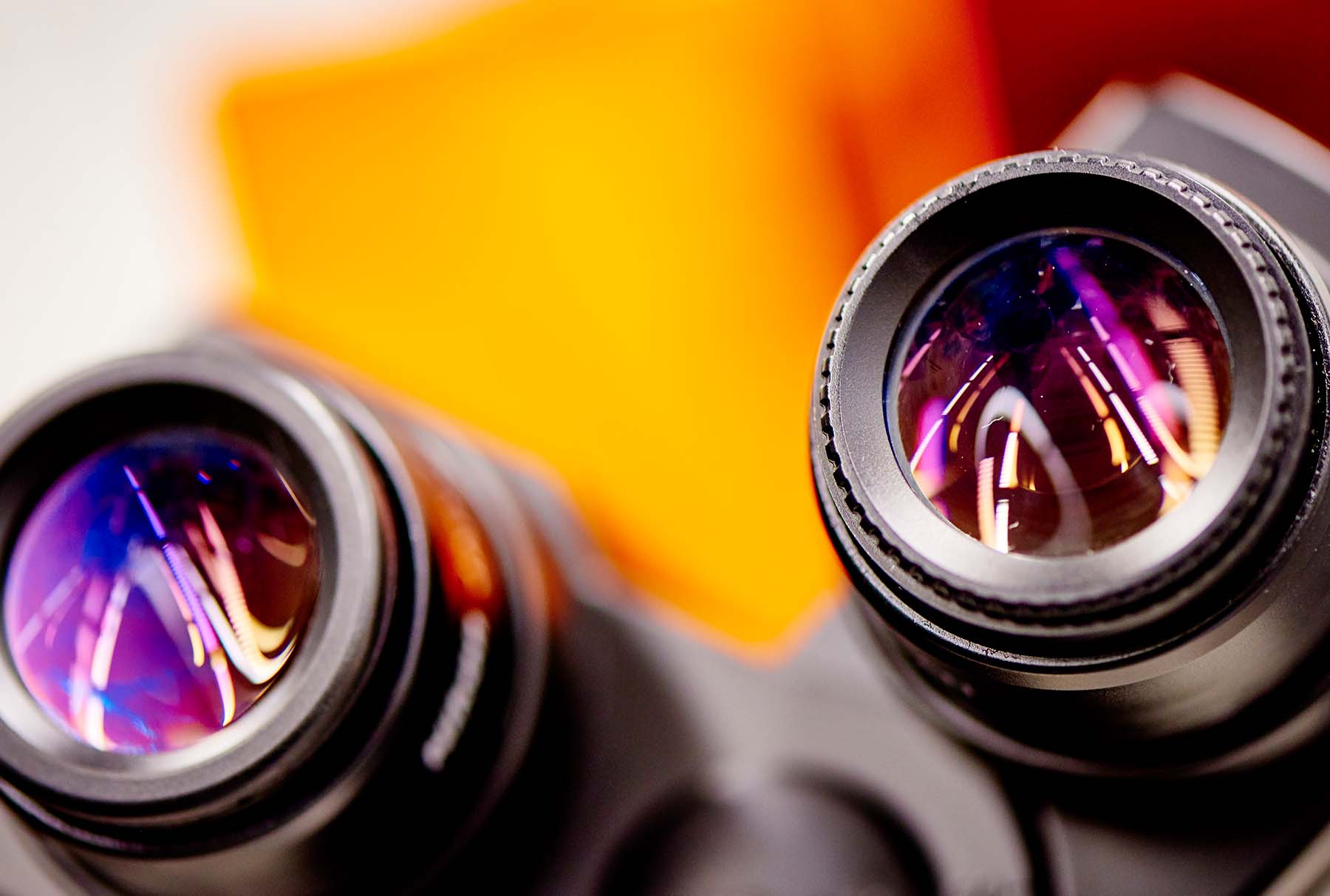Scanning Electron Microscopy
Scanning electron microscopy enables imaging of a surface using an electron beam.
By using a variety of detectors topographic images, atomic number (Z) contrast images and elemental composition information can be obtained from the specimens.
Whilst all reasonable effort is taken to ensure the accuracy of the data we provide using calibration standards, databases and the experience of its qualified staff, the laboratories are not independently certified, and the University does not accept any responsibility for how clients use the data provided.
Our services
Scanning electron microscopy (SEM) enables analysis of the surface of a sample using an electron beam. The electron beam interacts with the surface of the sample and a number of signals are emitted from the sample. By using a variety of detectors located in the main chamber of the microscope these signals can be captured and topographic images, atomic-number (Z) contrast images and elemental composition information can be obtained from the specimen.
Our equipment includes a Jeol JSM-5610LV that contains:
- Tungsten filament Scanning Electron Microscope with Low Vacuum mode
- Secondary and Backscattered electron detectors
- Oxford Instruments ‘Aztec’ EDX system with ‘X-act’ thin-window detector with 129 eV resolution at 5.9keV
Our electron microscope services offer the following analytical capabilities:
Digital imaging
Digital imaging over a range of magnifications depending on sample quality (~ x20 to x100 000) in the following modes:
- Secondary electron emission (SEI): when the specimen is irradiated with a fine electron beam, secondary electrons are emitted from the specimen surface. Topography of the surface can be observed by two-dimensional scanning of the electron probe over the surface and acquisition of an image from the detected secondary electrons.
- Backscattered electrons (BSE): backscattered electrons are those scattered backward and emitted out of the specimen when the incident electrons are scattered in the specimen. They have higher energy than secondary electrons and therefore provide information on a deeper region of the sample. They are sensitive to the composition of the specimen (i.e. the higher the atomic number of the element, the more backscattered electrons emitted). This means that an area where heavy atoms are located in a sample looks bright in a backscattered electron image (atomic number contrast).
Energy dispersive X-ray spectroscopy (EDS or EDX)
When the sample is irradiated with an electron beam, electrons in the inner shells are emitted from the constituent atoms in the specimen and the vacant orbits are filled with outer-shell electrons. This leads to the sample emitting X-rays whose energies correspond to the energy difference between the outer-shell electrons and the inner-shell electrons. These X-rays are called ‘characteristic X-rays’ because their energies are characteristic of individual elements. EDX detectors allow the ID and semi-quantification of elements from carbon (C) upwards. Users should note that quantification of light elements (e.g. C, N and O) cannot be performed with accuracy.
Low vacuum mode (LV)
This imaging mode is used for observation of non-conductive specimens without coating. When operating in low vacuum mode, samples are exposed to a lower energy electron beam in the chamber than used during standard SEM examination, so there is less risk of damage to fragile or sensitive samples (e.g. bio-engineering materials).
Raman spectrometer
LabRam HR-800 Jobin Yvon. Raman spectroscopy identifies molecules from their interaction with monochromatic radiation. The molecules scatter radiation and can rotate or vibrate depending on the energy of the incident radiation and the molecular structure. Characteristic spectra of intensity versus wavenumber are generated.
Sample handling
- MSDS and COSSH forms must be supplied with the samples where appropriate
- Samples should be clearly labelled and to limit contamination they should be stored in clean glass or plastic containers. Clients should avoid touching the samples as much as possible
- Clients should either collect their samples at the end of the work, or a charge will be applied for their disposal
Applications
SAgE Analytical has a wealth of experimental knowledge and capabilities in all of our techniques. Please browse our applications below which intend to focus on typical areas of interest and bespoke experimental needs.
If you have questions about the SAgE Analytical Facility or would like to request a quote, contact us.
Contamination
Contamination can be a big problem in research/manufacturing when particles can appear buried in products and coatings affecting their final look and/or performance.
Analysing the composition of the contaminating particles can generally help in identifying the source for that particle and once that source is known, it will become easier to put measures in place to control it.
Scanning electron microscopes (SEMs) can be fitted with a range of detectors to analyse different aspects of a sample. One of these detectors is the EDX (Energy Dispersive X-rays) detector. This detector provides chemical composition of a sample, including what elements are present and their concentration.
Read further on contamination to understand the benefits of using SEM: Identification of Contamination using SEM and EDX
Failure analysis
Scanning electron microscopes (SEMs) are a powerful tool in determining the causes of failure on the micro and nano scales on a wide range of materials.
The large depth of field characteristic of SEMs allows high spatial resolution imaging of sample surfaces at higher magnification than conventional light microscopes. Different modes of failure show different characteristic features on the surface of the sample, therefore looking at a SEM image of a fracture surface can help us identify the cause of failure in the material.
Read more on failure analysis: Study of Failure Analysis of Materials using Scanning Electron Microscopy
Contact us
To request a quote, or ask us a question, you can complete our analytical services general enquiry form below.
If you’re a Newcastle University staff member or student, you can visit the internal Research and Analytical Services' intranet page.
